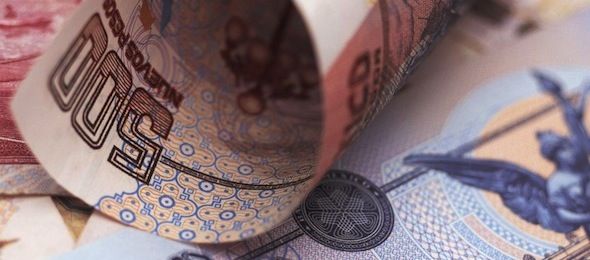The peso gains against the dollar due to greater appetite for global risk

The peso starts the session with an appreciation of 0.14% or 2.8 cents, trading around 19.75 pesos per dollar, with the exchange rate touching a maximum of 19.7981 and a minimum of 19.7197 pesos.
The appreciation of the peso is due to a greater appetite for risk at the global level, which has caused a general weakening of the US dollar, which this morning lost 0.38 percent.
With today’s depreciation, the dollar-weighted index is at its lowest level since January 7.
The fall of the dollar so far this week began yesterday with the comments of Fed Vice President Richard Clarida, who stressed that it is not yet time to consider reductions to the bond purchase program, as substantial progress has not yet been achieved in the United States labor market.
In the wide basket of main crosses, all currencies gained ground, with the exception of the Turkish lira, which lost 0.31 percent.
The most appreciated currencies are the Hungarian forint with 0.86%, the South African rand with 0.85%, the New Zealand dollar with 0.81% and the Norwegian krone with 0.78%.
Among the most appreciated currencies, the countries that produce raw materials stand out, as they continue to advance this morning.
The price of WTI starts with an increase of 0.50%, trading around 66.60 dollars per barrel.
The mexican peso
It is worth mentioning that oil is advancing at levels above $ 66 per barrel, which is a key resistance that has been drilled a few times since March, which opens the door for the maximum price of the year of $ 67.98 to be reached.
A further increase in oil prices could allow currencies such as the Mexican peso to extend their advance against the dollar.
Regarding economic indicators in Mexico, INEGI published the Timely Indicator of Economic Activity (IOAE), which anticipates an annual increase of 20.6% of the Global Indicator of Economic Activity (IGAE) for April, equivalent to a monthly contraction of 0.86 % according to the published nowcast estimate.
It should be remembered that, in April 2020, the IGAE contracted by 19.7% per year, so the significant annual growth is mainly due to the low comparison base.
For its part, the IOAE for March was revised upwards to an annual increase of 0.9% (from -2.1%), which is equivalent to a monthly growth of 3.93% in economic activity, after that in that month no state was located at a red traffic light, which made it possible to relax the confinement measures, especially in the services sector.
GDP
In May, conditions related to the pandemic continued to improve, registering 14 states with green traffic lights and 15 with yellow.
In addition, the vaccination process in the country has advanced from 5.36% of the population that had received at least the first dose of the Covid19 vaccine at the end of March to 12.06% as of May 17.
The foregoing has made it possible to increase consumer confidence. Going forward, economic activity is expected to continue to be driven mainly by the reactivation of the services sector.
However, some risks prevail for the Mexican economy for the rest of the year, where the following stand out: 1) uncertainty in the face of unorthodox policies, 2) rise in the price of commodities, 3) probable controversies regarding the T-MEC and 4) the shortage of semiconductors.
Manufacturing
On the other hand, this morning the Monthly Survey of the Manufacturing Industry was published for the month of March.
Regarding the total employed personnel of the manufacturing industry, a monthly increase of 0.38% was observed, spinning 10 months of consecutive advances.
Compared to March of the previous year, the observed growth was 0.32%, the first increase after 18 annual setbacks.
With respect to February 2020, the employed personnel of the manufacturing industry has practically shown a complete recovery, showing a contraction of only 0.001 percent.
Within the transport equipment subsector, employed personnel continues to lag behind, since at a monthly rate a contraction of 0.11% was observed, while, in its annual comparison, the contraction was 2.54%, indicating that employment in the sector has not yet achieved a full recovery.
Automotive section
According to original data, the plant capacity used in the manufacturing industry stood at 81.8%, increasing from the 76.8% observed in February.
Compared to the same month last year, an increase of 3 percentage points is observed.
Thus, the plant capacity used was at its highest level since October 2018.
Within the transportation equipment subsector, the plant capacity used was 84.9%, increasing from 77.8% in February, highlighting the recovery of manufacturing in the sector during March, after having weakened between January and February.
It should be noted that the used plant capacity of the transportation equipment subsector was at its highest level since February 2020, when it was 86.6 percent.
During the session, the exchange rate is expected to trade between 19.68 and 19.87 pesos per dollar.
The euro starts the session with an appreciation of 0.57%, trading at 1.2221 dollars per euro, while the pound gains 0.50% and is trading at 1.4204 dollars per pound.
Money market and debt
In the United States, the yield on 10-year Treasury bonds decreased by 1.0 basis point, to 1.64%, while in Mexico the yield on 10-year M bonds decreased by 0.9 basis points, at a rate of 6.87 percent .
Derivatives market and the peso
To hedge against a depreciation of the peso beyond 20.00 pesos per dollar, a purchase option (call), with an exercise date within 1 month has a premium of 1.53% and represents the right but not the obligation to buy dollars in the aforementioned level.
On the other hand, the interbank forward for sale is at 19.8163 at 1 month, 20.1754 at 6 months and 20.6548 pesos per dollar at one year.
Gabriela Siller; PhD
Director of Economic-Financial Analysis.
Banco BASE
![]()

